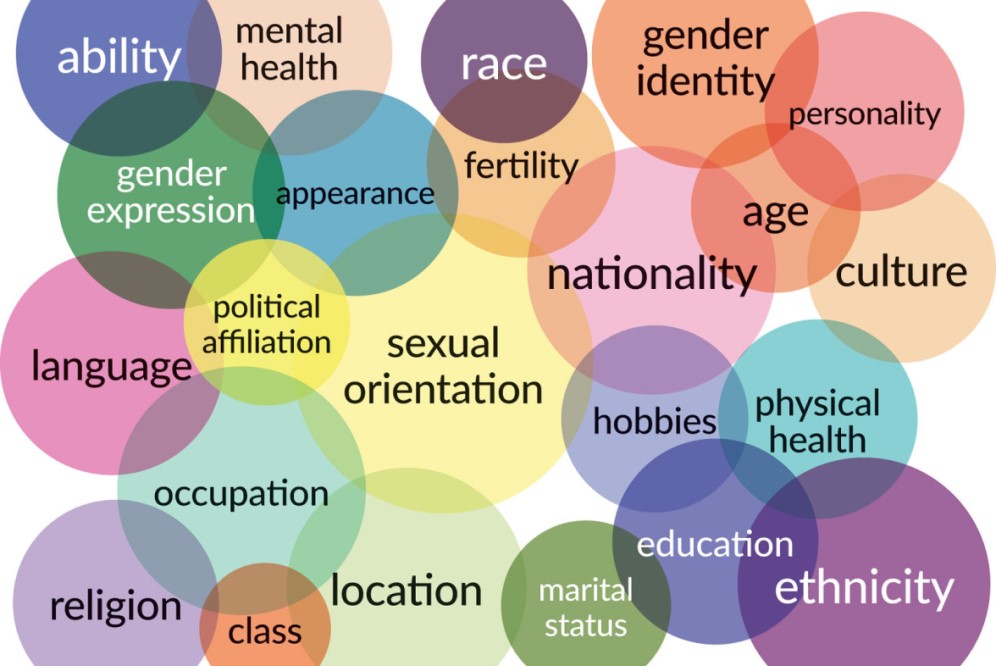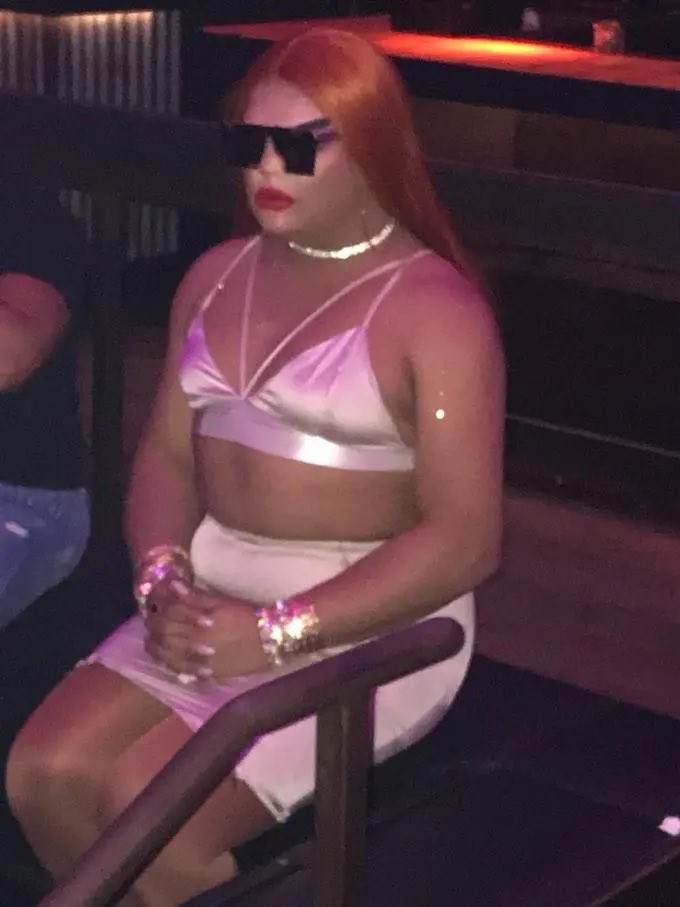
What is LGBTQ Intersectionality
LGBTQ Intersectionality
LGBTQ Intersectionality refers to how long-standing, often oppressive institutional precedents affect the individual lives of LGBTQ members. Among the LGBTQ community, there are different interactions with other aspects of society that influence other oppressions. These intersections manifest among the experiences and access to fundamental aspects of our lives. Intersectionality is not uniform among the LGBTQ community and varies based on location, class, and race.
These experiences range from different sectors of society, including leisure and essential topics. Education, public health, and monetized industries are all topics in which LGBTQ intersectionality occurs.





The stance taken by society at large significantly impacts the security and sovereignty of the LGBTQ community. On fundamental matters like health, many states in the United States vary on LGBTQ health, leaving many disadvantaged and marginally unsafe. Furthermore, many commercial industries frequently look to exploit the LGBTQ community for image, profit, and monetization. This blog identifies these intersections in the essential and leisure sectors and their broader effect on the LGBTQ community.

History of LGBTQ Intersectionality:
The history of LGBTQ Intersectionality dates back to the early 20th century, pioneered by Black-Lesbian femenists Audrey Lorde and Barbra Smith. The first piece of writing that birthed the idea was Lorde’s essay “Age, Race, Class, Sex: Women Redefining the Revolution”. Lorde argues that there are broad distinctions within the LGBTQ community that define degrees of oppression, including class, location, race, religion, and sexuality.
Public Health

Bittker, Bobbi M. “LGBTQ-Inclusive Curriculum as a Path to Better Public Health.” Www.americanbar.org, 5 July 2022, www.americanbar.org/groups/crsj/publications/human_rights_magazine_home/intersection-of-lgbtq-rights-and-religious-freedom/lgbtq-inclusive-curriculum-as-a-path-to-better-public-health/. Accessed 11 Oct. 2023.
This article investigates the integration of LGBTQ-inclusive curriculum in schools and its broader effect on public health. The content described how incorporating an inclusive curriculum boosts public health in the sectors of mental health and physical health while reducing bullying commonly targeted at students of the LGBTQ community. LGBTQ education can come in many forms, including LGBTQ history, physical, sexual health, and mental health. In including the curriculum, society can root out unfair stigmas and discrimination of the LGBTQ community through education. The implementation of LGBTQ based curriculum greatly improves the physical and mental health of students. However, this is not the reality right now for many, as multiple states have legislation opposing LGBTQ curriculum being cycled into the educational system. These states include Florida, Texas, Louisiana, and North Carolina. LGBTQ members in different regions of the United States are inherently less safe, a tenant of intersectionality. Every member of the LGBTQ community has a different experience based on uncontrollable factors. This is a published journal from the American Bar Association, which holds the largest association of lawyers in the world. This gives great credibility to the piece and exemplifies why an LGBTQ-inclusive curriculum benefits students’ well-being and health at school.
Monetized Industry

Beirne, Rebecca. “The First Bisexual Bachelorette and the Messy History of Bisexual Representation on Reality TV.” The Conversation, 27 Oct. 2021, theconversation.com/the-first-bisexual-bachelorette-and-the-messy-history-of-bisexual-representation-on-reality-tv-170362. Accessed 12 Oct. 2023. (Exploitation)
The show “The Bachelorette” made history with the first bisexual contestant on the show. This, on the surface, sounds great and does include a sense of inclusion, but many have criticized the show’s portrayal of bisexuality. Brooke Blurton, a Bisexual woman from Australia boosted the popularity of the show instantaneously with the incorporation of the LGBTQ community in the popular show “The Bachelorette”. However, it seems Brooke’s identity is portrayed as different and unprecedented, creating a stigma of irregularity. The show queues in on this label and seems to perpetuate that she is “different.” this is not a malignant portrayal, but it still creates the divide between sexualities, separating us as human beings. Furthermore, following Brooke’s coming out there have been other women who have come out on the show. However, among the group of LGBTQ-identifying women, there has only been one woman of color. This is another aspect of intersectionality, the show wants to come off as “inclusive” but it perpetuates a sense of racial discrimination among their LGBTQ contestants. White women apart of the LGBTQ community have dominantly been more represented, opposed to women of color. The show has traditionally been fueled by heteronormative standards, where the men try to woo the woman based on their looks, personality, and confinement to standards seen as “hot.” Women dress a certain way and are expected to act with a “ladieness” to appeal to men, comparable to masculine-feminine relationships of history. This show is consumed and propped up by a sector of society who enjoy this environment of heteronormative activity. This raises the question of the true intention of what the show did. Was it to further LGBTQ acceptance or to appeal to a greater audience, raising viewership and profit?
Drag

Corridon, Linzey, and Theresa N. Kenney. “RuPaul’s Drag Race Contestant, Maddy Morphosis, Sparks Conversations about Cishet Inclusion and Queer Discomfort.” The Conversation, 14 Feb. 2022, theconversation.com/rupauls-drag-race-contestant-maddy-morphosis-sparks-conversations-about-cishet-inclusion-and-queer-discomfort-176326. Accessed 11 Oct. 2023.
This article gives a comprehensive view of the different factors of what, how, and where drag should be incorporated and celebrated. Among these factors is primarily the inclusion of Cishet individuals in the world of drag. Cishet people are people who have the same biological and gender identity attracted to “opposite” people of the same biological and gender identity. The problem is highly nuanced and revolves around appropriation, inclusion, and exclusion. On one hand, excluding specific people is somewhat restrictive and doesn’t correspond with the message of the LGBTQ community. However, opening the door to cishet individuals increases the risk of appropriation and monetization, along with queer people feeling uncomfortable. Drag was pioneered by the LGBTQ community and is one of the few aspects of society tailored towards the inclusion of LGBTQ members. Therefor, I understand this hesitancy to allowing cishet people. Cishet people have engineered the idea of intersectionality by creating the idea of normalcy and degeneracy. Although there is no conclusive answer, the question that came up following Maddy Morphosis’s inclusion in RuPaul’s drag show. How can the queer community have a conversation about the role of cishet people in drag without exploiting queer culture? This is an insightful article that leads to progress and inclusion while maintaining the core values of queer culture.

The idea of intersectionality differs greatly from region to region. What is accepted, what is legal, and what is socially acceptable all change per geography. Many in the world today have to hide their identity as in some parts of the world being Gay warrants the death sentence. The term itself is very subjective and doesn’t have a singular meaning. All of what makes up our identity is unique and carries with it an innate acceptance or exclusion. These distinctions define us and create different parameters of experiences.
Works Cited.
Works Cited
Beirne, Rebecca. “The First Bisexual Bachelorette and the Messy History of Bisexual Representation on Reality TV.” The Conversation, 27 Oct. 2021, theconversation.com/the-first-bisexual-bachelorette-and-the-messy-history-of-bisexual-representation-on-reality-tv-170362. Accessed 12 Oct. 2023.
Bittker, Bobbi M. “LGBTQ-Inclusive Curriculum as a Path to Better Public Health.” Www.americanbar.org, 5 July 2022, www.americanbar.org/groups/crsj/publications/human_rights_magazine_home/intersection-of-lgbtq-rights-and-religious-freedom/lgbtq-inclusive-curriculum-as-a-path-to-better-public-health/. Accessed 11 Oct. 2023.
Cathy J. Cohen, “Punks, Bulldaggers, and Welfare Queens: The Radical Potential of Queer Politics?” ; Edition 4th Edition ; First Published 2016 ; Imprint Routledge.
Corridon, Linzey, and Theresa N. Kenney. “RuPaul’s Drag Race Contestant, Maddy Morphosis, Sparks Conversations about Cishet Inclusion and Queer Discomfort.” The Conversation, 14 Feb. 2022, theconversation.com/rupauls-drag-race-contestant-maddy-morphosis-sparks-conversations-about-cishet-inclusion-and-queer-discomfort-176326. Accessed 11 Oct. 2023.
Fox, Jesse, and Rachel Ralston. “Queer Identity Online: Informal Learning and Teaching Experiences of LGBTQ Individuals on Social Media.” Computers in Human Behavior, vol. 65, no. 1, Dec. 2016, pp. 635–642, www.sciencedirect.com/science/article/abs/pii/S074756321630437X, https://doi.org/10.1016/j.chb.2016.06.009. Accessed 11 Oct. 2023.
Singh, Sejal, and Laura E. Durso. “Widespread Discrimination Continues to Shape LGBT People’s Lives in Both Subtle and Significant Ways.” Center for American Progress, 2 May 2017, www.americanprogress.org/article/widespread-discrimination-continues-shape-lgbt-peoples-lives-subtle-significant-ways/. Accessed 11 Oct. 2023.
